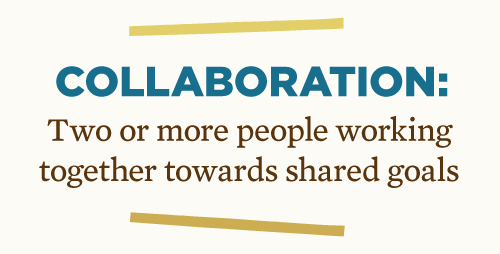 Photo Credit: Boom Positive
Photo Credit: Boom Positive
From the time we were small children, we learn by imitating. We master both our mindsets and our capacities and competencies by learning from others…by imitating those we see doing well or doing good. We imitate until it becomes our own, and then amazingly sometimes others imitate us as well.
That is both sobering and challenging for us as leaders. It also gives pause in our choice of whom we imitate. We may sometime have to go out of our way to find excellent leaders to learn from. It does not take away necessity of following the direction of our bosses. We become like those we spend time with. The warning here is if we struggle with appreciating our leaders we may still default to become like them.
So we keep people in our lives worthy of imitating.
[I wanted to write about a much heavier topic this morning as our country is reeling from two mass shootings this weekend leaving at least 30 dead. So utterly devastating. I hope to write on this another day but today the words fail. Please, if you pray, pray for our country and especially for those grieving the loss of their loved ones.]
What characterizes a person we would profit by imitating? In a 12-minute teaching, author theologian John Piper emphasizes the importance of both the passion and the practice of the one we would seek to imitate. Both “the feeling and the living” for the sake of others rather than one’s own ambition.
 Photo Credit: Desiring God; John Piper
Photo Credit: Desiring God; John Piper
I’ve said before that I love the grammar device of alliteration, and in writing today, it was easy to pull 10 distinctives together all beginning with “i” to describe a leader to imitate:
1) Inclusive – This leader would open the circle of leadership to include content experts, team leaders/coaches, and a sampling of those most affected by decisions being made. She/he is not threatened by a wider circle of influence.
2) Intelligent – I do not know how intelligent I am but have benefited from the thinking of others. Intelligence includes good judgment and sound reasoning.
3) Interested – You have probably experienced the difference when one is feigning interest vs. one who is genuinely interested in the person(s) right in front of him. She/he genuinely cares what others think and how they are affected by the direction of the organization.
4) Impassioned – It is easy to get behind someone who loves what they are doing and care about the outcomes (and their impact on people). When the cause is right or just, we can understand how the impassioned one is unflagging in his commitment. Adding the “i’s” above to “impassioned” moves folks forward in positive ways.
5) Involved – By involved, I don’t mean a micro-manager nor the opposite of an armchair quarterback . Involved is taking responsibility for the part that belongs to the leader and doing what he/she can to help the others on the team to do their part. With leaders like this, we don’t have to search for them. They’re close by.
6) Inspiring/Inspired –We are fueled to imitate someone when we see that what he/she is about matters. Even when the task is hard and the goal is beyond our view, this type person will encourage us to keep persevering.
7) Innovative/Imaginative – I’m an idea person who would be throwing ideas out and throwing ideas out until everyone left the room. Thankfully, I’ve had the opportunity through the years to work with people who know how to take good ideas and turn them into great products/services. I’ve learned through the years by imitating these teammates – of going through the steps of taking an idea through to the innovation. So grateful for leaders who allowed me…welcomed me…to stay in the conversation.
8) Indefatigable – It’s easy to get tired and give up. People worthy of imitating are those who keep at it…who don’t stop until “it’s” done.
9) Intrepid – Along with indefatigable is intrepid – that characteristic of one who is not afraid of what could happen or what could be stirred up in the doing. She/he takes risks, values the adventure we are on, doesn’t mind the messy.
10) Irreproachable – Finally, character. Consistent, dependable character. We know we are safe to imitate this person because he/she is not going to surprise us with moral failure or self-serving or indifference or favoritism. Again, I’m so thankful for men and women who have given me space at their tables through the years…who continue to be the same sorts of people now as they were decades ago. Just more of whom I want to be like as I get older.
So there’s my list. It’s sort of like a “perfect leader person”, right? Or maybe you are thinking other characteristics more appropriate to the person you would hope to imitate. Please comment below – they don’t have to start with an “i”.
Philippians 3:17 – the Kind of Person You Should Imitate – John Piper






































